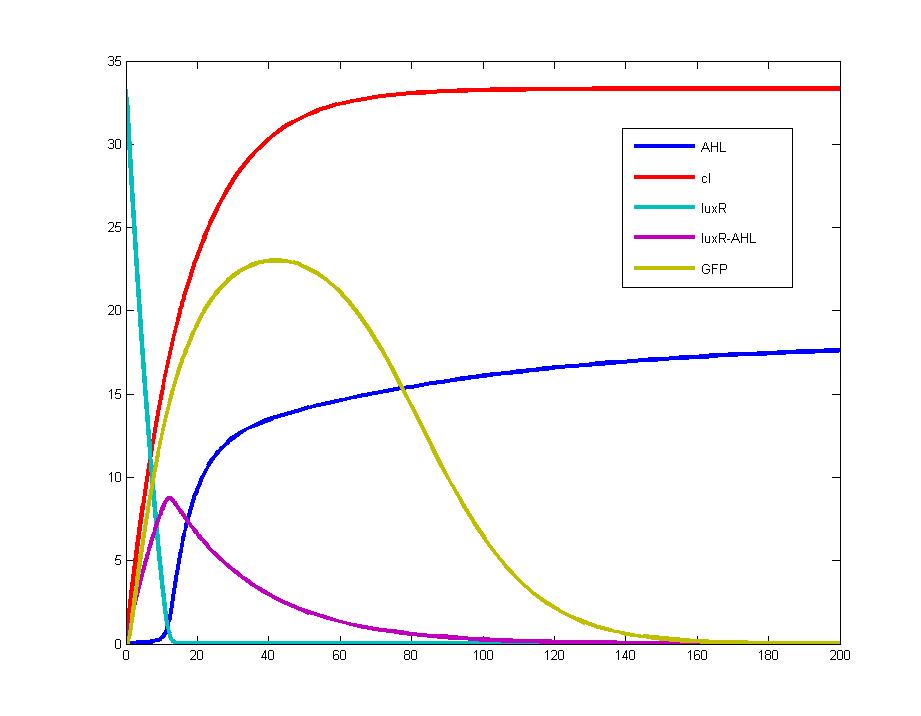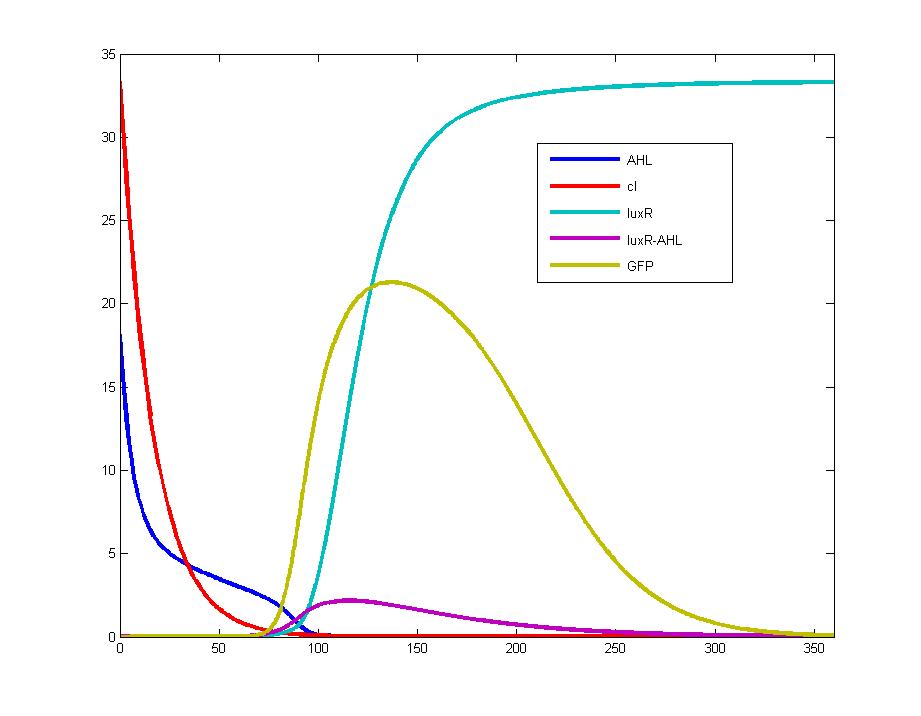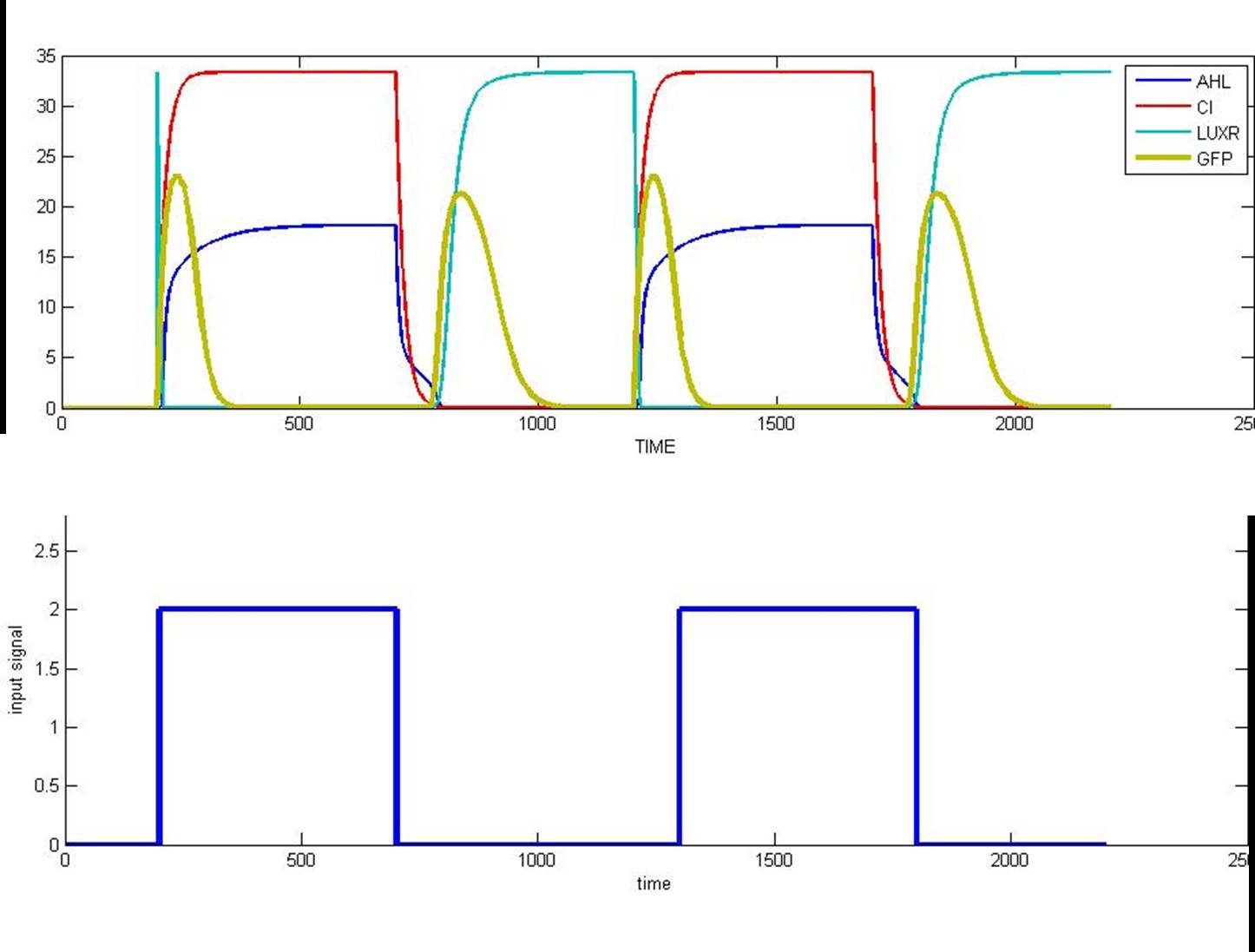Tianjin/FLIP-FLOP/Model11
From 2007.igem.org
(Difference between revisions)
Sunlovedie (Talk | contribs) |
Lovecarrot (Talk | contribs) |
||
| Line 7: | Line 7: | ||
Figure 2: This figure shows the concentration variation of chemical moleculars when the input signal is at negative edge when t=0. | Figure 2: This figure shows the concentration variation of chemical moleculars when the input signal is at negative edge when t=0. | ||
[[Image:tjumodel11b.jpg|500px]]<br> | [[Image:tjumodel11b.jpg|500px]]<br> | ||
| + | |||
| + | Figure 3: This graph shows the variation of AHL,cI,LuxR and GFP responding to the addition of input | ||
| + | signal(IPTG). It is easy to find that the level of AHL and cI shares the same changing tendency | ||
| + | with that of IPTG, whereas the contents of LuxR protein changes inversely with that of IPTG. | ||
| + | Therefore, the output signal (GFP) only exists at the edge of IPTG curves where the input signal | ||
| + | switches from 1 to 0 or from 0 to 1. | ||
[[Image:TJUMODELFF203.jpg|800px]]<br> | [[Image:TJUMODELFF203.jpg|800px]]<br> | ||
|} | |} | ||


